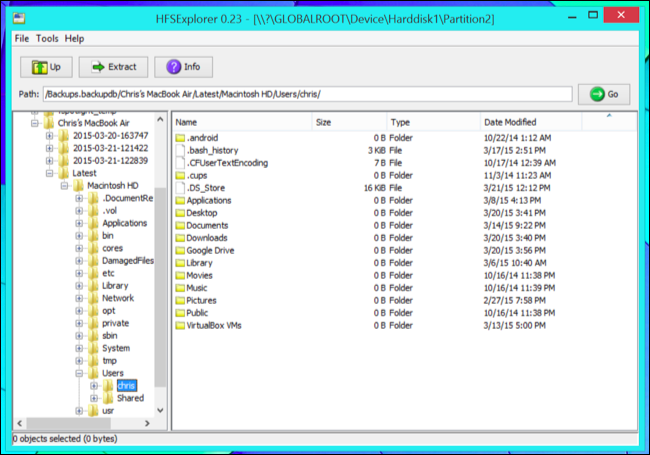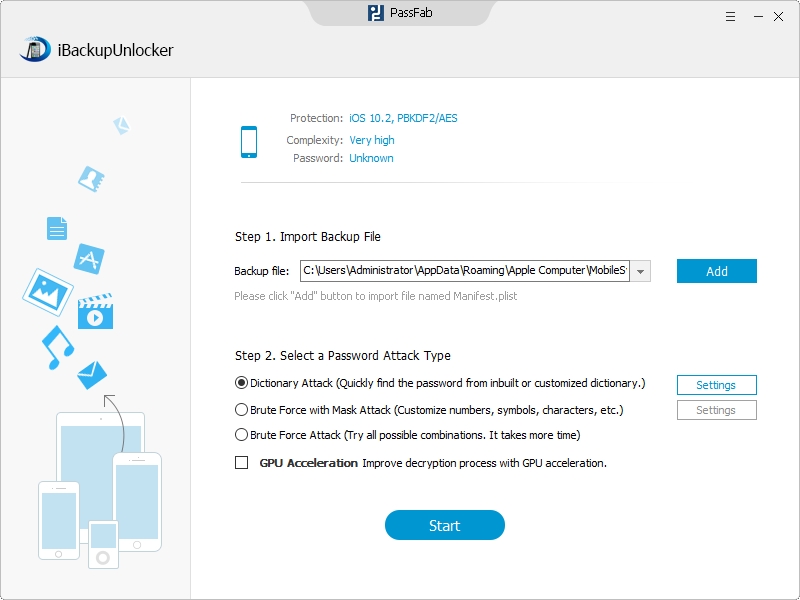Manually archive email messages, contacts, and other items to an Outlook for Mac Data File (.olm) to easily reduce your inbox size. You can save an .olm file to any location on your Mac or on a different machine for safekeeping.
- Mac Selective Files To Backup Manual Online
- Mac Selective Files To Backup Manual Download
- Mac Selective Files To Backup Manual Software
- Mac Selective Files To Backup Manual 2016
For selecting individual files and folders: Mac Windows. Right-click the Mozy icon ( / ), then select Settings, and then More Settings. Select the File System tab. Select the files or folders you want to backup. Note: It is important to pay attention to the color of the check boxes in your settings when selecting files.
On the Tools tab, choose Export.
Note: Don't see the Export button? Make sure you have the latest version of Outlook. On the Outlook Help menu, click Check for Updates. If all Outlook updates are applied and you still don't see the Export button, look for Export on the Outlook File menu.
In the Export to Archive File (.olm) box, check the items you want to export, and choose Continue.
In the Save As box, under Favorites, choose the Downloads folder, and click Save.
Once your data has been exported, you'll get a notification. Choose Finish.
For information on how to access the data that you've saved in an Outlook for Mac Data File (.olm), see Import email messages, contacts, and other items into Outlook 2016 for Mac.
I want to export to iCloud or to some other type of archive file

The only export option available at this time is the .olm archive file. To request additional export options, visit the Outlook Suggestion Box to leave your feedback. The Outlook team actively monitors this forum.
See also
Note: In Outlook for Windows, older Outlook items are archived automatically on regular intervals, also known as AutoArchive. This is not available in Outlook 2011 for Mac, but you can set up your own data backup -- see Automatically archive or back up Outlook for Mac items.
Export to an Outlook for Mac Data File

When you export to an Outlook for Mac Data File, you can choose to filter information by category or by item type. For example, if you want to transfer networking information from your work computer to your home computer, you could export only items that you've assigned to the Networking category. Similarly, you might want to export all your contacts on your home computer and then import them on your work computer. During the export process, you can choose to keep the exported items in Outlook, or to delete them after they are exported.
On the File menu, select Export > Outlook for Mac Data File.
Choose to filter by category or item type. To export all items in Outlook, select Items of the following types, and then select all the check boxes.
Click the right arrow to continue, and then follow the instructions. The Outlook for Mac Data File uses the .olm extension.
Notes:
If you have a Microsoft Exchange account or directory services account, contacts from the directory are not exported. Similarly, items that are stored in public folders are not exported.
An Outlook for Mac Data File does not contain account settings or your Outlook preferences.
Export contacts in a tab-delimited text file
To transfer a set of contacts to another computer or application, you can export contacts as a tab-delimited text file, which can be opened by many other mail, spreadsheet, and database applications.
Mac Selective Files To Backup Manual Online
On the File menu, click Export.
In the Export Assistant, click Contacts to a list, and then follow the instructions. Tab-delimited files are saved with a .txt extension.
Notes:
If you have a Microsoft Exchange account or directory services account, contacts from the directory are not exported.
When you export a contact, all the information in Outlook that is related to that contact — such as mailing addresses, birthday, and notes — is included. However, some mail applications might be unable to display the contents of certain fields such as 'Spouse/Partner' and 'Interests.'
Encryption certificates aren't exported.
Export individual items
You can also export single items as individual files, either to have as a backup or to use in other applications.
In the item list, select the item that you want to export.
To select multiple items, hold down as you choose each one.
Drag the selection to the desktop or a folder in the Finder.
Notes:
Email messages are exported as .eml files.
Contacts are exported as vCard (.vcf) files.
Calendar events and tasks are exported as .ics files.
Notes are exported as .html files.
For information on how to access the data that you've saved in an Outlook for Mac Data File (.olm), see Import a .pst file into Outlook for Mac from Outlook for Windows.
See also
Time Machine is the built-in backup solution in macOS, automatically making backups of your Mac onto an external drive. It's easy to set up, and after that, you don't even need to worry about it. But if you want to customize your experience to fit more particular needs or use cases, you absolutely can.
What is Time Machine?
Time Machine is Apple's built-in solution for backing up macOS. You can connect an external hard drive over USB or Thunderbolt (or FireWire, for older Macs) for a wired connection, or over a network for a wireless connection. Time Machine backs up every hour, deleting older backups as the backup drive starts running out of space.
It's a great first layer to any backup solution, and it's included right in the operating system.
Getting started with Time Machine
First, the basics. Get Time Machine set up, then learn about how you can choose what's backed up, how to restore from Time Machine, how to encrypt backups, and more.
Digging in to Time Machine
So you've got everything set up and you know the basics of Time Machine. But there are some advanced steps that you should know about.
Best drives for Time Machine
If you want to use Time Machine, you'll need an external drive to get started. Here's our favorite, along with a few alternative options.
Mac Selective Files To Backup Manual Download
Ideal for most users
G-Technology G-Drive 1TB
Durable, colorful accessory
USB-C ready plus USB 3.0 and Thunderbolt 3 compatible, this stylish drive from G-Technology is lightweight and Mac ready.
Also available in 2TB and 4TB models, G-Technology's G-Drive is one of the easiest drives to use for backup. Just plug it in and you're halfway there! It's available in silver, space gray, and rose gold.
Other options
The following hard drives are also among our favorites for 2019.
If you need something more portable, or something with a little more style, check out these options.
SanDisk Extreme Portable External 250B, 500GB, 1TB, 2GB(From $73 at Amazon)
This product proves that even hard drives can be beautiful.
LaCie Porsche Design 1TB, 2TB, 4TB(From $90 at Amazon)
Mac Selective Files To Backup Manual Software
LaCie is well known for its backup devices and this is one of the most popular models on the market.
Any other questions?
If you have any additional questions about getting started with or using Time Machine, let us know in the comments.
macOS
Main
Mac Selective Files To Backup Manual 2016
We may earn a commission for purchases using our links. Learn more.